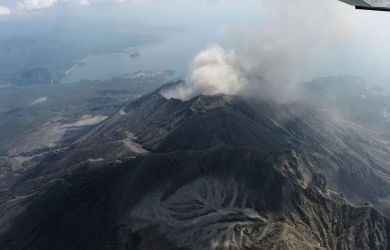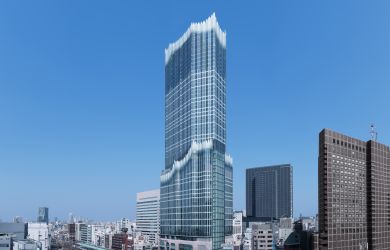
July 23, 2009
Closed Gates
The Japanese government is often criticized for its treatment of refugees - But a look behind the numbers reveals that the situation is more complex than it seems
By Metropolis

Ministry of Justice statistics, January 2009
Asylum seekers are not legally allowed to work during this period, yet the government provides financial support to only a limited number of candidates, and only for a period of four months. This support is hardly lavish, either, consisting of ¥135,000 in living expenses per month for a family of four, plus a monthly maximum of ¥60,000 in housing support. When the number of refugee applications last year doubled from 2007 to 1,599, the government temporarily suspended support altogether, claiming to be “overwhelmed” by the increase. Although the payments were reinstated after a few days, worse news arrived this May, when tightened eligibility criteria cut off support for more than 150 asylum seekers.
Eri Ishikawa of the Tokyo-based Japan Association for Refugees (JAR) admits that the situation is tough. “We’re swamped,” she sighs. “Forty people have become homeless, some of them women and children. While we and other charities are trying to secure accommodation as quickly as possible, we’re struggling to deal with the sudden increase in demand.”
In addition to legal and social advice, the JAR also provides financial support for those in need. After the government tightened its acceptance criteria, the group launched a fundraising effort in order to continue supporting those who had been deprived of aid under the new restrictions. Thanks to both corporate and individual donations, JAR has managed to raise ¥3,609,000, which they aim to start distributing this month.
Asylum seekers with valid passports or travel papers are not usually incarcerated as soon as they arrive in Japan, and they can enter the country on a tourist visa. This is what Hso and Myint* did when they first came here in 1992, fleeing the military junta in their native Myanmar. When we meet them in their elegant Korean barbecue restaurant in Takadanobaba, it’s hard to believe that they have overcome a 17-year struggle to get there. Speaking no Japanese when they first arrived and without legal advice or financial support, they had no choice but to slip under the radar, avoiding the authorities after their tourist visas ran out. Having made connections with the local Myanmarese community, they managed to make do for ten years by working illegally. Finally, in 2003, they applied for refugee status on the advice of their families.
Yet no sooner had they applied than Hso was arrested while out riding his bicycle, when police noticed that his alien registration card and visa were out of date. He was held in detention for 64 days awaiting trial, during which time he shared a cell with two yakuza. “Ironically, they understood me better than the police,” he recalls. “They shouted at the officers, ‘Hey! Release this guy, he’s done nothing wrong!’ But when I tried to tell the police I was a refugee, they said it had nothing to do with them, that it was a matter for the Ministry of Justice.”
Hso was eventually released with a warning and five-year probation, but that wasn’t to be the end of it. After his case was passed over to the immigration authorities, he was immediately taken to a detention center in Shinagawa, where he would spend another 19 months.
“It was terrible,” he says. “There were six men to a six-mat room, and you had to ask for permission just to use a pen. I had severe back pain, but the doctor didn’t even look at me when he came. He just gave me weak painkillers, and it was a month before they finally took me to hospital—in handcuffs.” Eventually, Hso was given spinal injections to relieve his pain.
After applying for voluntary release seven times, Hso was finally let out to join Myint, who had been struggling to raise their three young children by herself. Receiving no help from the government, she had had to survive on money sent over by her family in Myanmar. In May 2005, after a tense two-and-a-half year wait, the couple was finally informed that they had not been granted refugee status, but were allowed to stay in the country as long-term residents on humanitarian grounds.
“I wish the government had recognized us as refugees,” says Hso, “but I know that I am one inside, and that’s what counts.”
Cases like this give critics of Japan’s refugee policy ample ammunition. The length of time it takes to consider refugee applications and the lack of support provided to asylum seekers during this period are both issues that need to be addressed. Critics are also quick to attack the numbers of asylum applications and the approval rate, arguing that neither compares favorably to other industrialized countries. Even last year’s unprecedented 1,599 applications pale in comparison to the approximately 49,000 received by the USA, 35,200 by France or 30,500 by the UK. While Sweden has one applicant for every 14 citizens, in Japan the figure is just one per 75,000.
Yet such comparisons can be misleading. It’s important to remember that no country actively invites asylum seekers. Nations that have signed the UN Convention on Refugees are committed only to the principle of “non-refoulement,” which means they pledge not to return refugees to areas where they face potential persecution or danger. In practice, the number of applications a country receives depends not on its immigration laws and policies per se, but rather on how they are perceived by asylum seekers. Other factors, such as conflicts in the surrounding area and the existence of a large foreign population or native support network, also come into play.
Japan’s unpopularity as a destination for asylum seekers is due in part to the relative lack of conflict in Southeast Asia, as well as the country’s small foreign population and the perceived difficulty of learning the language and adjusting to the society. History also comes into it: in the same way that Europe’s long tradition of colonialism and immigration helps explain the high numbers of refugees living there, Japan’s isolationism is a major factor.
By focusing on the numbers of asylum seekers who are ultimately recognized as refugees—around 11 percent—Japan’s critics also often overlook those who are granted special residence permission for humanitarian reasons, as was the case with Hso and Myint. When you take these people into account, the number who are permitted to stay here actually stands at around 25 percent.
Despite appearances to the contrary, too, the government hasn’t been quite as intransigent as it seems. Japan’s overseas programs, including its generous donations to the UNHCR, have begun to be matched at home in recent years. The most significant initiative is a pilot resettlement program announced last December—the first in the region—which is designed to actively increase the number of refugees here. Due to start in 2010, the program will bring 30 Myanmarese refugees a year for three years, from the camps in Thailand where they are currently sheltered. Small steps, maybe, but the move was warmly welcomed by both the UNHCR and refugee charities, including JAR.
Such measures have not gone unnoticed by the domestic media, which has voiced concern over the problem of integrating refugees into society. Yet these fears may be overstated. Expats in Japan are often quick to criticize the country for being “closed” to foreigners, but it’s easy to forget how asylum seekers are treated in other industrialized nations, where they are frequently consigned to ghettoes and subjected to daily discrimination and hate crimes. The relatively low rate of immigration in Japan has meant that “asylum seeker” isn’t a dirty word here as it is in many European nations, and the country’s extremely low crime rate—including a relative lack of racially motivated crimes—is also a point in its favor.
Of course, there’s still plenty of room for improvement. Hso and Myint’s story is just one among many tales of struggle and hardship. Still, it’s important to focus on the issues that really matter in this debate, like the welfare and treatment of asylum seekers within Japan, not just the numbers coming here. Refugee issues in the international community are often described in terms of “burden-sharing.” But one look at Hso and Myint—now exemplary citizens with perfect Japanese, running their own business while bringing up three bilingual children—indicates that asylum seekers and refugees can make positive contributions to the society that hosts them. Perhaps the new resettlement program is a sign that the government is slowly recognizing this fact, and a reason to feel more optimistic about the future of refugees in Japan.
●For details on the Japan Association for Refugees, see www.refugee.or.jp/en
* Names have been changed





